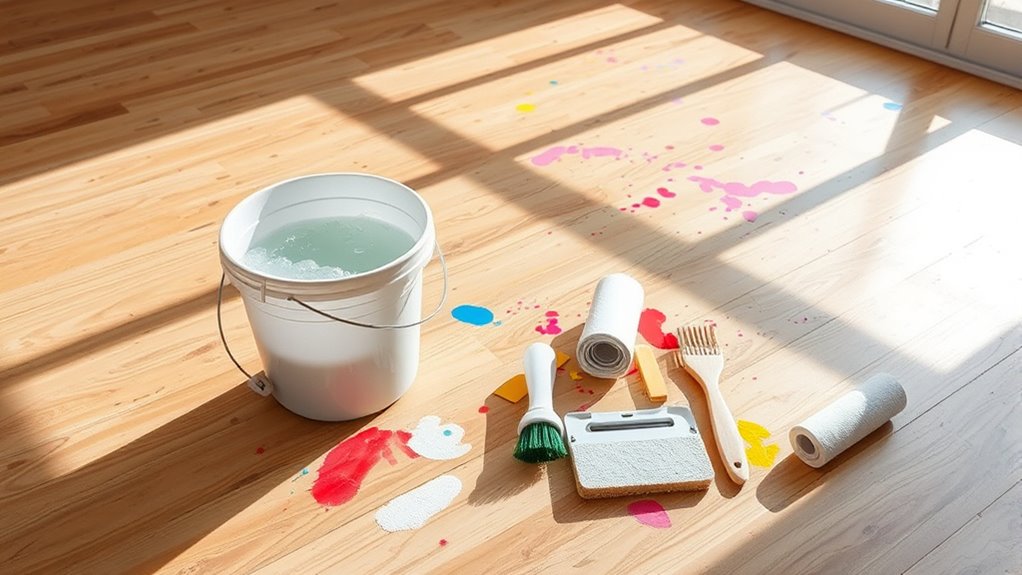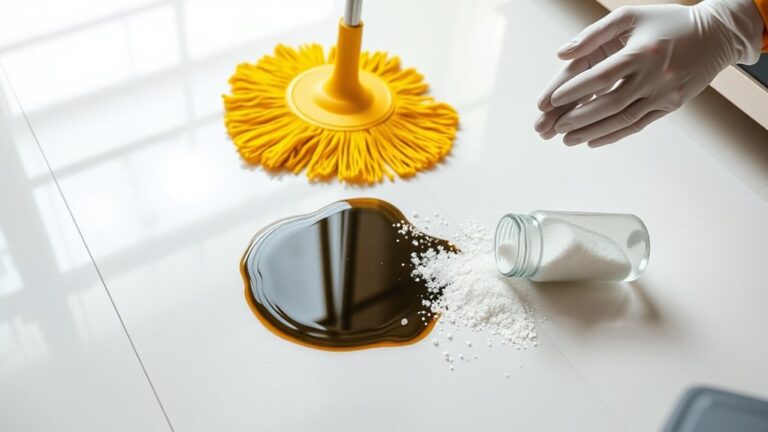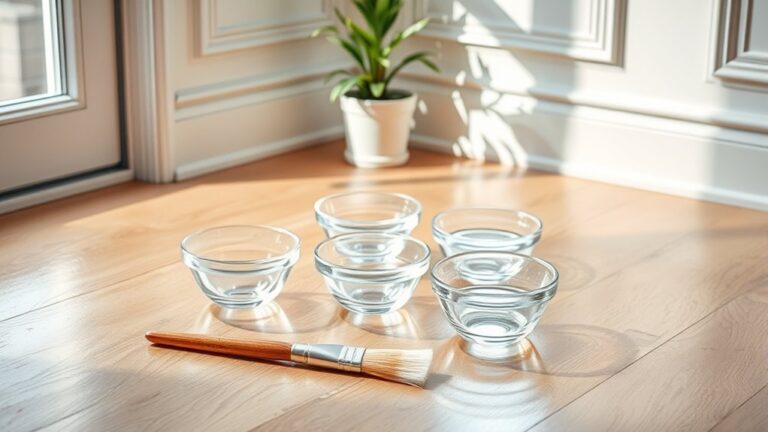First, identify your paint type and floor material to choose the right cleaning method. Gather mild detergent, warm water, or solvents like mineral spirits for oil-based paint, plus gloves and a scraper. Apply the suitable remover gently, testing on a small area. Use a soft cloth to scrub softly and lift paint without damaging the vloer. Finally, clean the surface thoroughly and restore any wear with proper care. Follow these basics, and you’ll be ready to tackle paint removal effectively.
Assess the Type of Paint and Flooring
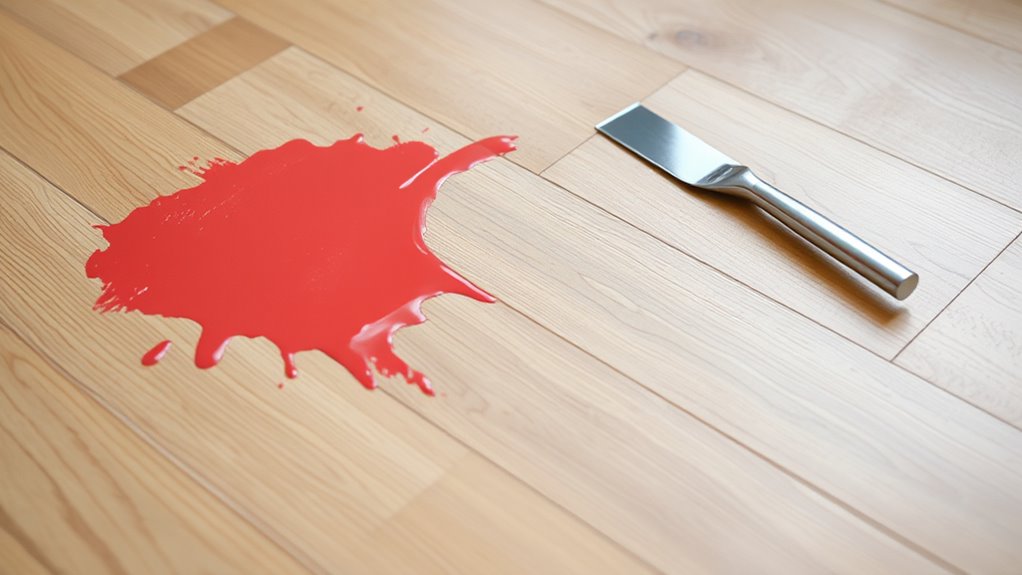
Before you start removing paint, you need to identify both the type of paint spilled and the flooring material involved. Different paint types—latex, oil-based, or acrylic—react uniquely to cleaning methods. Latex paint, water-based, is easier to clean when wet, while oil-based paint requires solvents. Knowing your floor materials—whether hardwood, tile, laminate, or vinyl—is equally essential. Each surface demands specific care to avoid damage during paint removal. For instance, hardwood is sensitive to moisture and harsh chemicals, whereas tile can tolerate stronger cleaners. By accurately evaluating both paint types and floor materials, you’ll choose the right approach, preserving your floor’s integrity. This step guarantees your freedom to clean effectively, avoiding costly mistakes and maintaining your space’s beauty.
Verzamel de benodigde schoonmaakmiddelen
Knowing the type of paint and floor you’re dealing with helps determine which cleaning supplies you’ll need. Gather basic cleaning products like mild detergent, warm water, and a soft cloth for latex paint on sealed floors. For oil-based paint, stronger solvents such as mineral spirits or paint thinner might be necessary. Always have a plastic scraper or putty knife on hand to gently lift paint without damaging the surface. Don’t forget gloves and protective eyewear—safety precautions are essential when handling chemicals. Ventilate the area well to avoid inhaling fumes. Having paper towels or rags ready will help you quickly clean spills or excess solvent. By assembling the right supplies beforehand, you’re setting yourself up for an efficient, safe, and effective paint removal process.
Apply the Appropriate Paint Removal Method
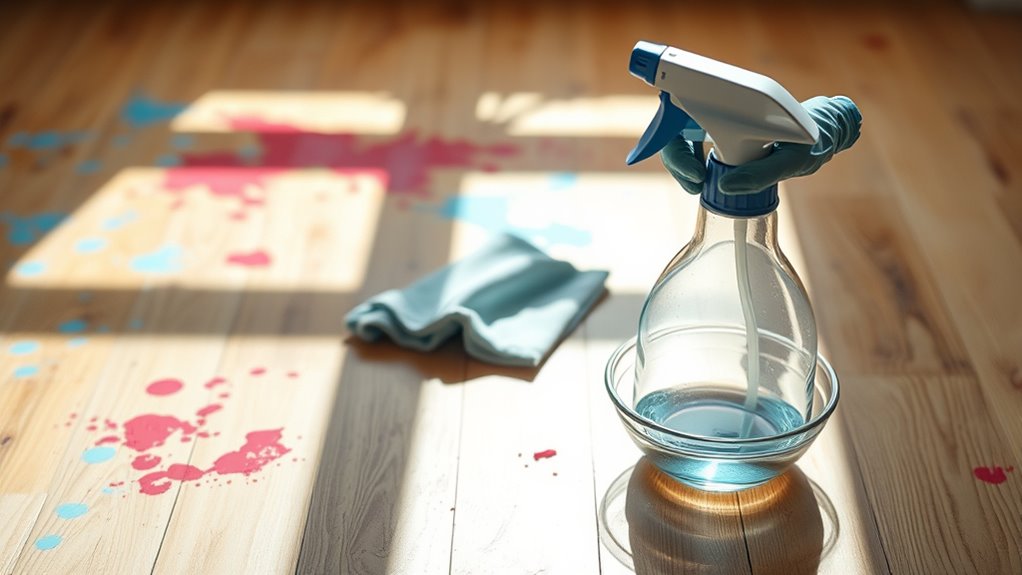
Once you identify the paint type and floor material, choose the removal method that best suits them. For water-based paints, warm soapy water or a mild detergent often works well. For oil-based paints, you might need a solvent like mineral spirits or paint thinner. Always test any product on a small, hidden area first to avoid damage. Use paint removal techniques that match your floor’s finish—avoid harsh chemicals on delicate surfaces like hardwood or vinyl. Remember floor protection tips: lay down drop cloths or plastic sheeting around the work area to prevent spreading residue or accidental damage. Ventilate the space well when using chemical removers. Selecting the right method guarantees effective paint removal while preserving your floor’s integrity and your freedom to maintain your space with confidence.
Gently Scrub and Remove Residue
Start by gently scrubbing the paint spot with a soft cloth or sponge soaked in your chosen cleaning solution. Use light, circular scrubbing techniques to avoid damaging your floor’s surface. Don’t rush; patience guarantees you loosen the paint without spreading it further. As the paint softens, carefully wipe away loosened paint and cleaning solution with a clean cloth. For stubborn spots, repeat scrubbing with minimal pressure to prevent scratches. Effective residue removal is key—make certain no paint traces or cleaning solution remain, as they can cause discoloration or stickiness. Always test your scrubbing method in an inconspicuous area first. By mastering these scrubbing techniques, you maintain your floor’s integrity while freeing it from unwanted paint, giving you control and freedom over your space’s appearance.
Clean and Restore the Floor Surface
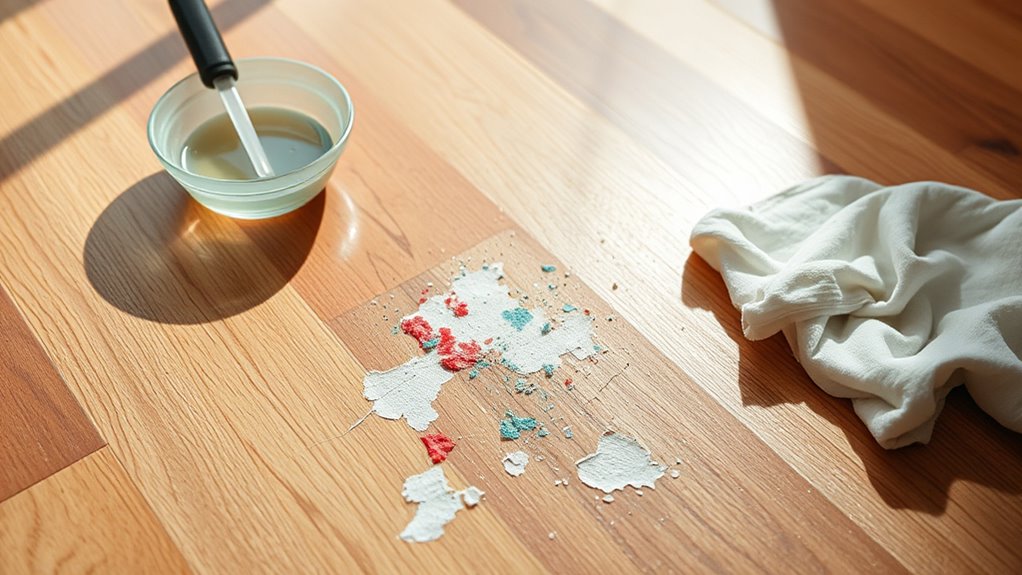
After removing all paint residue, you’ll want to focus on cleaning and restoring your floor’s surface to its original condition. Start by wiping the area with a damp cloth to remove dust and any leftover debris. For stubborn spots, use a mild detergent diluted in water, then rinse thoroughly. Once dry, assess for any scratches or dullness caused during paint removal. Floor restoration may require light sanding or applying a suitable finish to bring back the floor’s natural shine. Finally, apply a protective sealant to preserve the surface and prevent future damage. This surface protection step guarantees your floor remains durable and looks great long after your cleanup. By following these steps, you’ll regain both the beauty and freedom to enjoy your floor without worry.

